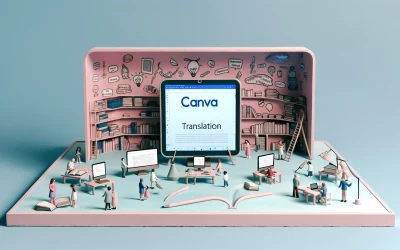ChatGPT is an AI-powered tool that has been making waves in the marketing industry. It has become an indispensable tool for email marketers who want to boost their email marketing campaigns‘ performance. With ChatGPT, marketers can create compelling email content that resonates with their target audience, increasing open rates, click-through rates, and ultimately, conversions.
However, coming up with the right prompts for ChatGPT can be challenging, especially for marketers who are new to the tool. That’s why we’ve compiled a list of the best ChatGPT prompts for email marketing. These prompts cover a wide range of topics, from event invitations to product launches, and are designed to help you create engaging email content that drives results.
Whether you’re a seasoned email marketer or just getting started, these ChatGPT prompts will help you take your email marketing campaigns to the next level. So, without further ado, let’s dive into the best ChatGPT prompts for email marketing.
Understanding Your Audience
To create effective email marketing campaigns using ChatGPT prompts, it’s essential to understand your audience. This section will cover the three main aspects of audience understanding: identifying target demographics, analyzing subscriber behavior, and segmentation strategies.
Identifying Target Demographics
Knowing your target demographics is crucial to creating personalized email content that resonates with your audience. Demographics can include age, gender, location, income, education, and more. By identifying these factors, you can tailor your prompts to generate content that speaks directly to your audience.
Analyzing Subscriber Behavior
Analyzing subscriber behavior is another critical aspect of audience understanding. By tracking subscriber behavior, you can gain insight into what content is resonating with your audience and what isn’t. This can include metrics such as open rates, click-through rates, and conversion rates.
Segmentation Strategies
Segmentation is the process of dividing your audience into smaller groups based on shared characteristics. By segmenting your audience, you can create more targeted email campaigns that speak directly to each group’s needs and interests. This can include segmentation based on purchase history, engagement levels, and more.
Crafting Compelling Subject Lines
Crafting compelling subject lines is crucial for the success of any email marketing campaign. The subject line is the first thing that the recipient sees and it determines whether they will open the email or not. Here are some tips to help you craft subject lines that will grab the attention of your audience and increase your open rates.
Personalization Techniques
Personalization is a powerful technique that can help you create a connection with your audience. By using the recipient’s name or other personal information in the subject line, you can make the email feel more relevant and personalized. According to Mayple, using personalization in the subject line can increase open rates by up to 29%.
Urgency and Curiosity Triggers
Creating a sense of urgency or curiosity in the subject line can also be effective in increasing open rates. Urgency triggers such as “Last Chance” or “Limited Time Offer” can create a fear of missing out and encourage the recipient to take action. Curiosity triggers such as “You Won’t Believe What’s Inside” or “Secrets Revealed” can pique the recipient’s interest and encourage them to open the email to find out more.
A/B Testing for Optimization
A/B testing is a powerful technique that can help you optimize your subject lines for maximum effectiveness. By testing different subject lines with a small portion of your audience, you can determine which subject lines are most effective and use them for the rest of your audience. According to Bizway, A/B testing can increase open rates by up to 49%.
Creating Engaging Content
Email marketing is an effective way to reach out to potential customers and retain existing ones. However, with the increasing amount of emails that people receive every day, it is important to create engaging content that stands out. Here are some tips for creating engaging content using ChatGPT prompts.
Visual Elements in Emails
Visual elements such as images, videos, and GIFs can make emails more engaging and interesting. ChatGPT can help generate ideas for visual elements that can be used in emails. For example, ChatGPT can provide prompts for creating images or videos that showcase the features of a product or service. Additionally, ChatGPT can help generate ideas for creating GIFs that add humor or interest to an email.
Interactive Email Components
Interactive email components such as polls, quizzes, and surveys can increase engagement and provide valuable information about customers. ChatGPT can help generate ideas for interactive email components that can be used to gather feedback or preferences from customers. For example, ChatGPT can provide prompts for creating polls or quizzes that ask customers about their preferences or opinions on a particular topic.
Storytelling in Email Marketing
Storytelling is a powerful tool in email marketing that can help create an emotional connection with customers. ChatGPT can help generate ideas for storytelling in email marketing. For example, ChatGPT can provide prompts for creating stories that showcase the benefits of a product or service. Additionally, ChatGPT can help generate ideas for creating stories that highlight the experiences of satisfied customers.
Optimizing Email Campaigns
Email marketing is one of the most effective ways to reach out to potential customers and keep existing ones engaged. However, it can be challenging to create compelling content that resonates with your audience and drives results. Here are some tips to help you optimize your email campaigns:
Best Times to Send Emails
The timing of your email campaign can have a significant impact on its success. Research shows that the best times to send emails are usually during the workweek, with Tuesday and Thursday being the most popular days. However, this can vary depending on your target audience and the type of content you are promoting. Consider testing different send times to see what works best for your audience.
Email Automation Tools
Email automation tools can help you streamline your email marketing campaigns and improve their effectiveness. These tools allow you to schedule emails in advance, segment your audience, and personalize your messages. Some popular email automation tools include Mailchimp, HubSpot, and Constant Contact.
Performance Metrics to Track
To measure the success of your email campaigns, you need to track key performance metrics such as open rates, click-through rates, and conversion rates. These metrics can help you identify areas for improvement and make data-driven decisions to optimize your campaigns. Keep in mind that these metrics can vary depending on your industry and audience, so it’s essential to benchmark against your own performance over time.
Compliance and Best Practices
Understanding GDPR and CAN-SPAM
When it comes to email marketing, compliance with regulations such as GDPR and CAN-SPAM is crucial. GDPR stands for General Data Protection Regulation, which is a set of rules that govern how businesses handle personal data of individuals residing in the European Union. On the other hand, CAN-SPAM is a US law that regulates commercial emails and ensures that recipients have the right to opt-out of receiving such emails.
To comply with GDPR, businesses must obtain explicit consent from individuals before sending them marketing emails. They must also provide a clear and easy-to-understand way for individuals to opt-out of receiving emails. Similarly, CAN-SPAM requires businesses to include a valid physical address in all marketing emails and provide a clear way for recipients to opt-out of receiving future emails.
Maintaining Email List Health
Maintaining a healthy email list is crucial for the success of any email marketing campaign. Businesses should regularly clean their email lists to remove inactive or invalid email addresses. This not only ensures that emails are being sent to engaged recipients but also helps prevent emails from being marked as spam.
Another best practice for maintaining email list health is to segment email lists based on recipient behavior or demographics. This allows businesses to send more targeted and relevant emails, which can lead to higher engagement rates.
Writing for Accessibility
When writing marketing emails, it is important to consider accessibility for individuals with disabilities. This includes using alt text for images, providing a plain text version of the email, and using clear and concise language.
Businesses should also consider using a simple and easy-to-read font, as well as using sufficient contrast between text and background colors. This not only ensures that all recipients can access and understand the email content but also helps prevent emails from being marked as spam due to poor formatting.




